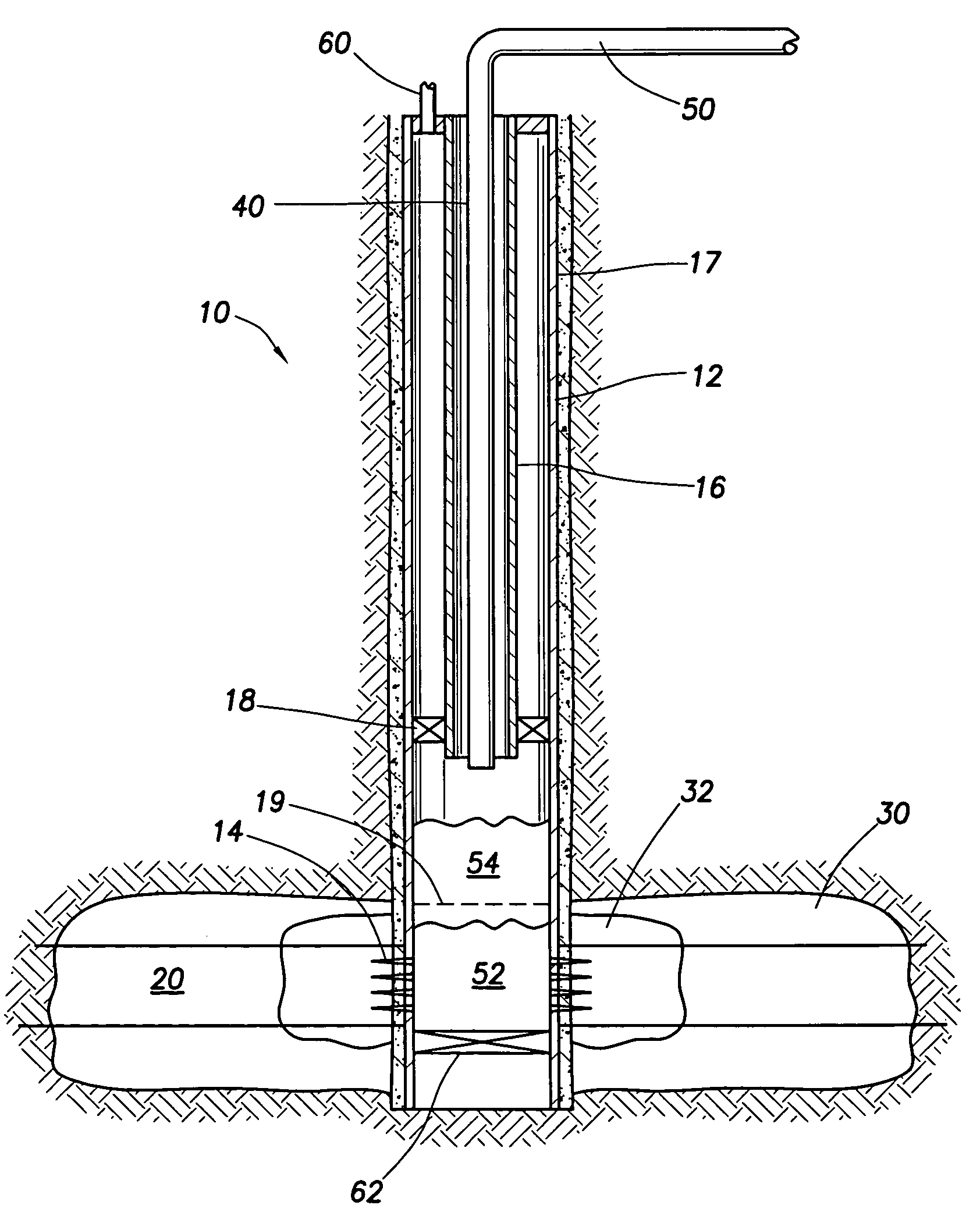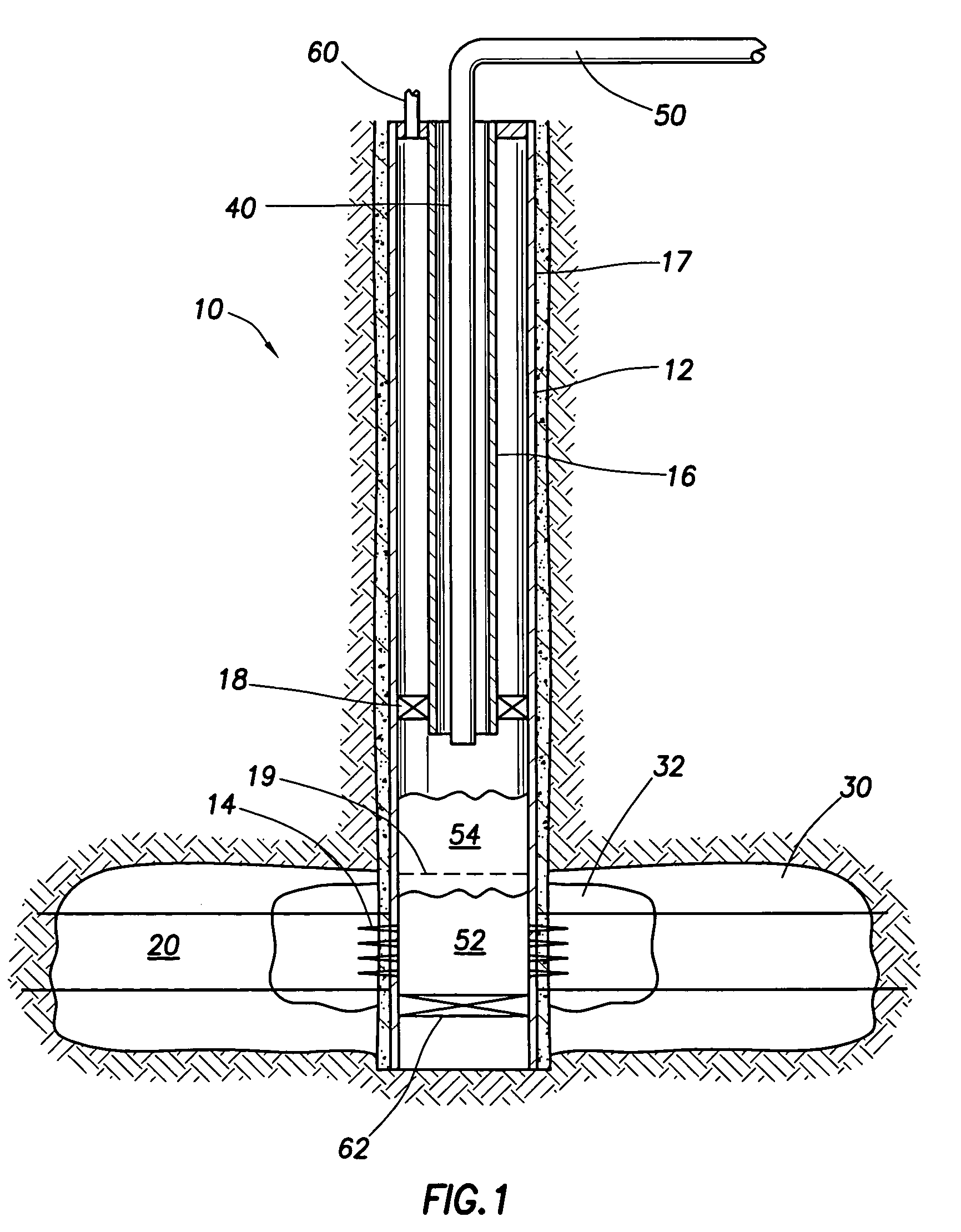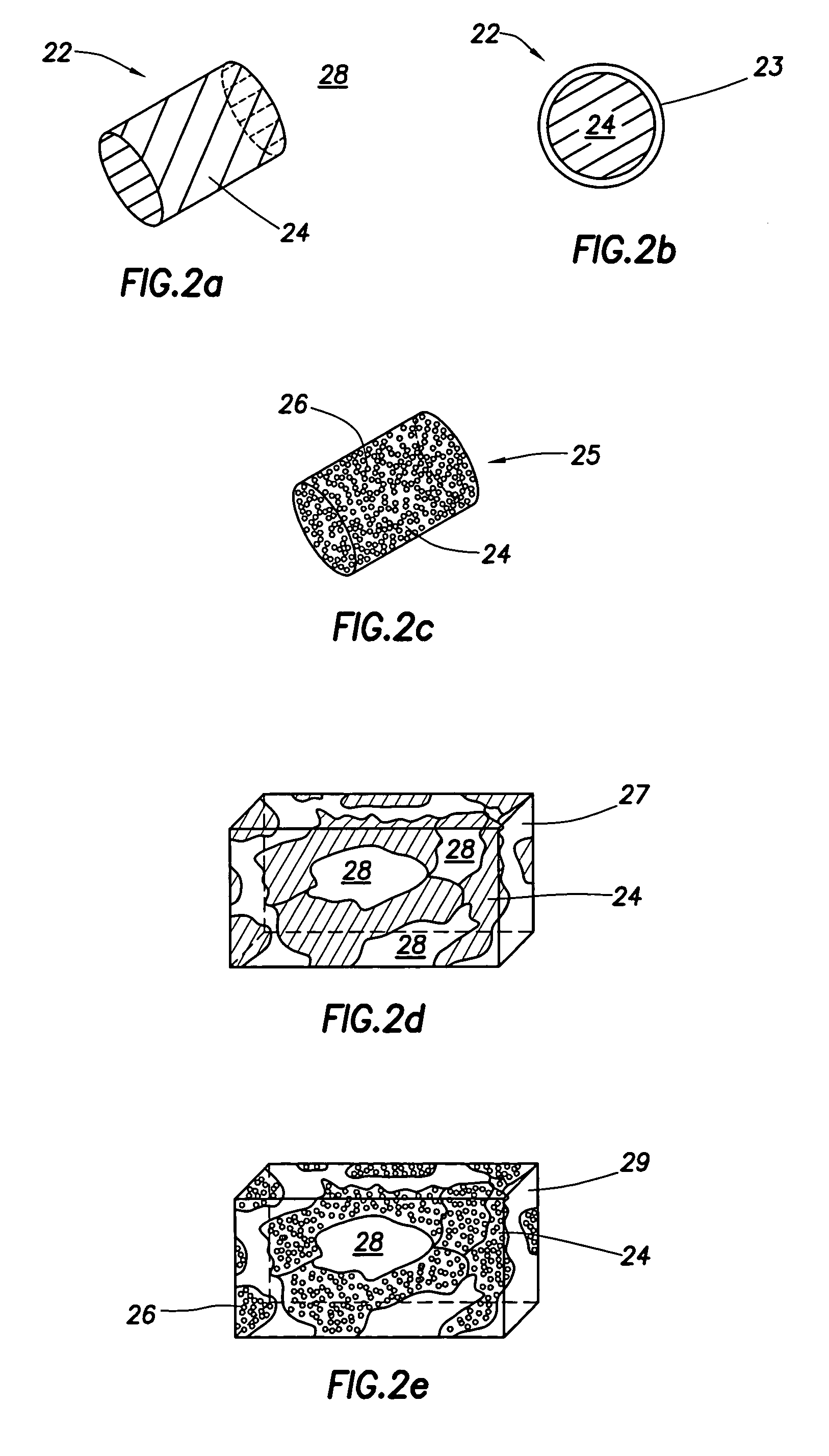Method for hydraulic fracturing with squeeze pressure
a hydraulic fracturing and squeeze pressure technology, applied in the direction of fluid removal, sealing/packing, borehole/well accessories, etc., can solve the problems of reducing or even eliminating the benefits of long propped fractures, cracks or fractures in the face of rocks, and damage to the permeability of longer propped fractures, so as to prevent the flowback of proppant and the effect of high effective viscosity
- Summary
- Abstract
- Description
- Claims
- Application Information
AI Technical Summary
Benefits of technology
Problems solved by technology
Method used
Image
Examples
Embodiment Construction
[0020]Referring to FIG. 1, wellbore 10 penetrates formation 20 where fluid is to be produced or injected. Wellbore 10 has casing 12 extending through formation 20, casing 12 being cemented in place by cement sheath 17. Perforations 14 have been formed through the wall of casing 12 and cement sheath 17 into formation 20. Perforations 14 may extend over the entire thickness of formation 20 or may extend only over a selected interval of formation 20 less than the total thickness surrounding wellbore 10. In some wells, hydraulic fracture 30 may have been formed around wellbore 10 by a previous treatment employing conventional fracturing fluid and proppant, using techniques well-known in industry. Hydraulic fracture 30 may have been formed for a time before injection of the fracturing fluid disclosed herein or may have been formed immediately before injection of the fracturing fluid disclosed herein. Alternatively, fracture 30 may not be present. Tubing 16 may have been suspended inside ...
PUM
 Login to View More
Login to View More Abstract
Description
Claims
Application Information
 Login to View More
Login to View More - R&D
- Intellectual Property
- Life Sciences
- Materials
- Tech Scout
- Unparalleled Data Quality
- Higher Quality Content
- 60% Fewer Hallucinations
Browse by: Latest US Patents, China's latest patents, Technical Efficacy Thesaurus, Application Domain, Technology Topic, Popular Technical Reports.
© 2025 PatSnap. All rights reserved.Legal|Privacy policy|Modern Slavery Act Transparency Statement|Sitemap|About US| Contact US: help@patsnap.com



